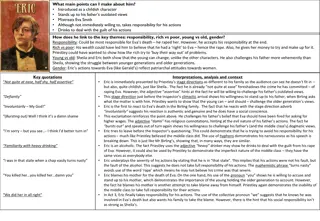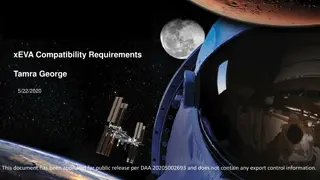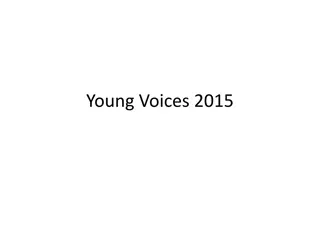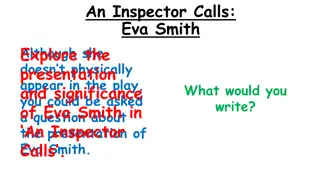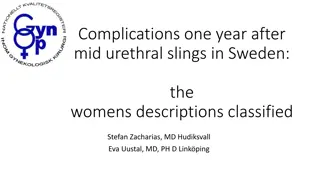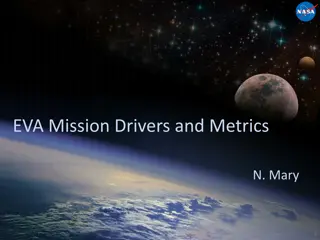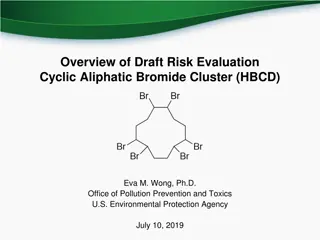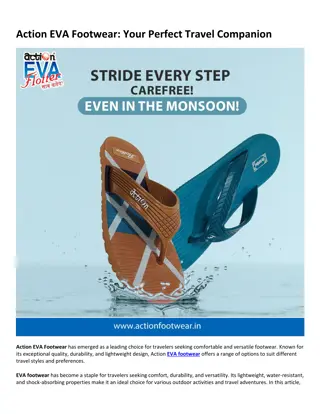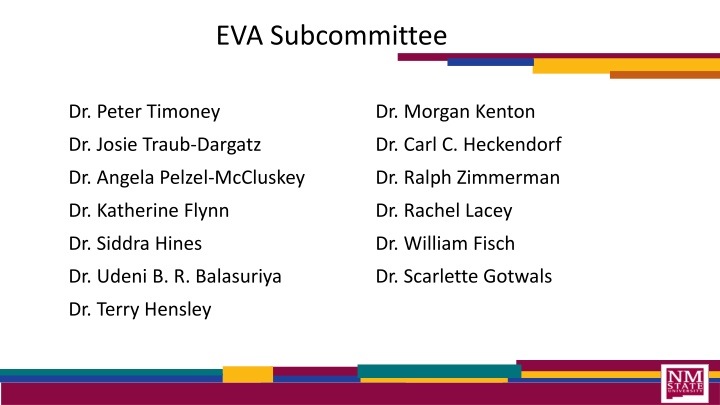
Understanding Equine Viral Arteritis (EAV) and Its Implications in the United States
Explore the challenges surrounding Equine Viral Arteritis (EAV) in the United States, including lack of national programs, varied state policies, testing requirements for stallions and imported semen, and the importance of EAV diagnostics in equine health management.
Uploaded on | 2 Views
Download Presentation

Please find below an Image/Link to download the presentation.
The content on the website is provided AS IS for your information and personal use only. It may not be sold, licensed, or shared on other websites without obtaining consent from the author. If you encounter any issues during the download, it is possible that the publisher has removed the file from their server.
You are allowed to download the files provided on this website for personal or commercial use, subject to the condition that they are used lawfully. All files are the property of their respective owners.
The content on the website is provided AS IS for your information and personal use only. It may not be sold, licensed, or shared on other websites without obtaining consent from the author.
E N D
Presentation Transcript
EVA Subcommittee Dr. Peter Timoney Dr. Morgan Kenton Dr. Josie Traub-Dargatz Dr. Carl C. Heckendorf Dr. Angela Pelzel-McCluskey Dr. Ralph Zimmerman Dr. Katherine Flynn Dr. Rachel Lacey Dr. Siddra Hines Dr. William Fisch Dr. Udeni B. R. Balasuriya Dr. Scarlette Gotwals Dr. Terry Hensley
EVA in the United States No national program No EVA import policy for stallions or semen Little buy in from industry. Kentucky and New York have Thoroughbred programs. Most equate EVA with abortions, not including it in respiratory disease differential diagnosis Current guidance documents UM&R, AAEP Out of sight, out of mind
Plan Determine level of importance Determine State policies and response protocols Determine diagnostic capabilities, reasons for testing, etc Determine knowledge of the disease/virus Promote inclusion of EAV diagnostics in abortion, embryonic loss, and respiratory outbreaks. Develop a mitigation document to be used during an outbreak
Surveys SAHOs 27/50 (29/50) Laboratories 9/15
EAV Importance to SAHOs 20 18 16 14 12 10 8 6 4 2 0 High Medium Minimal
Classification of EAV by State 12 10 8 6 4 2 0 Reportable Monitored Reportable Actionable Not Reportable or Actionable
EAV Vaccine Regulations 18 16 14 12 10 8 6 4 2 0 Regulate purchase Regulate Administration Yes No
Testing Requirements for Stallions 30 25 20 15 10 5 0 Domestic Importation into State International Importation into State Yes No
Testing Requirements for Imported Semen 30 25 20 15 10 5 0 Domestic International Yes No
EAV Positive Stallions Bred Only to EAV Vaccinated Mares 20 18 16 14 12 10 8 6 4 2 0 Yes No
Diffferential List 25 20 15 10 5 0 Abortion Early Embryonic Death Respiratory Disease Yes No
EAV Carrier Stallion Restrictions 10 9 8 7 6 5 4 3 2 1 0 No Entry Restrictions Entry Allowed and Recorded, no Restrictions Once Entered Entry Allowed, Breeding Compliance Biosecurity Agreement Recommended Entry Permit and Breeding Compliance Biosecurity Agreement Required
Reporting of Positive Results 20 18 16 14 12 10 8 6 4 2 0 Lab Required to Report To SAHO Rely on Submitting Veterinarian Investigate Positive Results
Total EAV Tests PCR Virus Isolation Virus Neutralization
2017 Tests 177 155 11008 PCR Virus Isolation Virus Neutralization
Who is contacted for a positive 9 8 7 6 5 4 3 2 1 0 Submitting Practitioner State Animal Health Offical USDA Veterinarian Submitting Practitioner State Animal Health Offical USDA Veterinarian
Queriable Specimen Information via Database (Breed, sex, age, location) 1 8 Yes No
Accreditation/Proficiency 9 8 7 6 5 4 3 2 1 0 Accredited Laboratory NVSL PT Participation (VN) Series 1
Special thanks to Katie Hatch for compiling the survey data.




